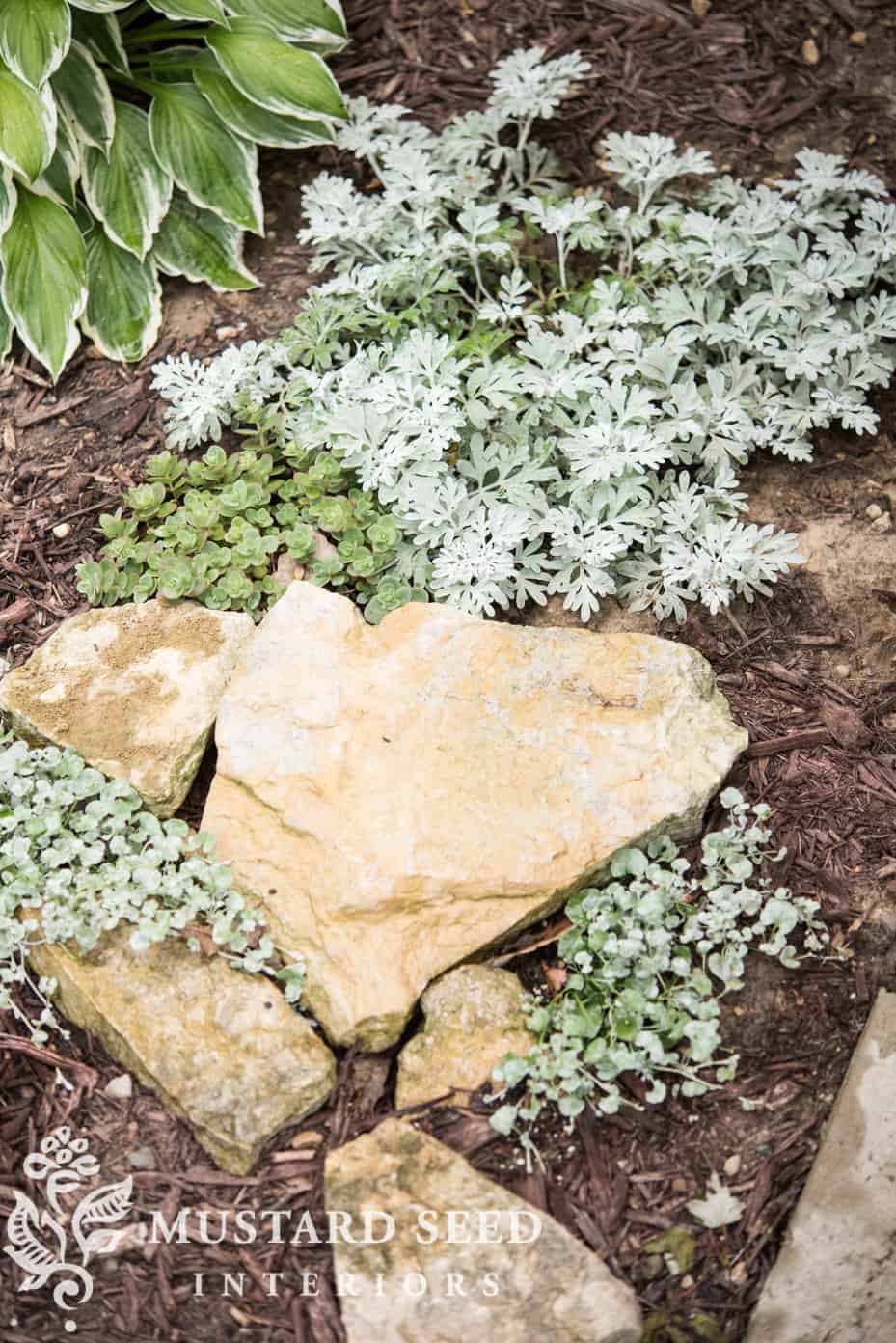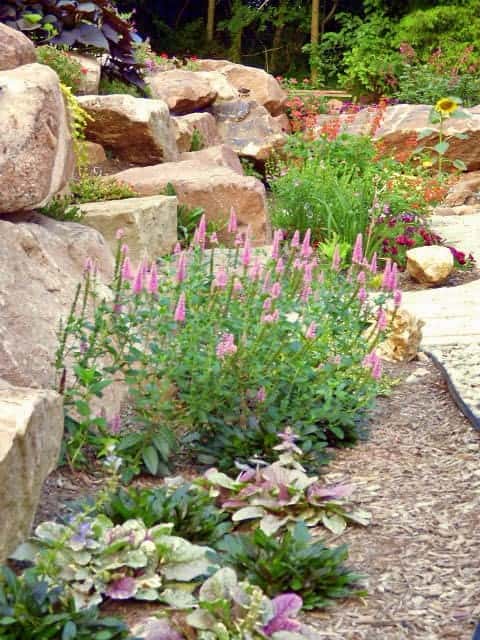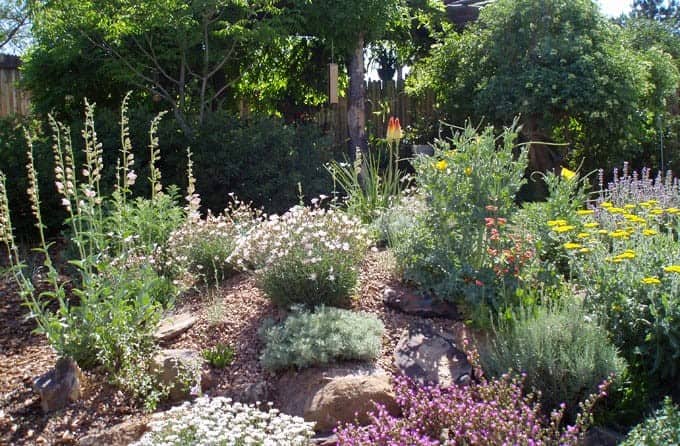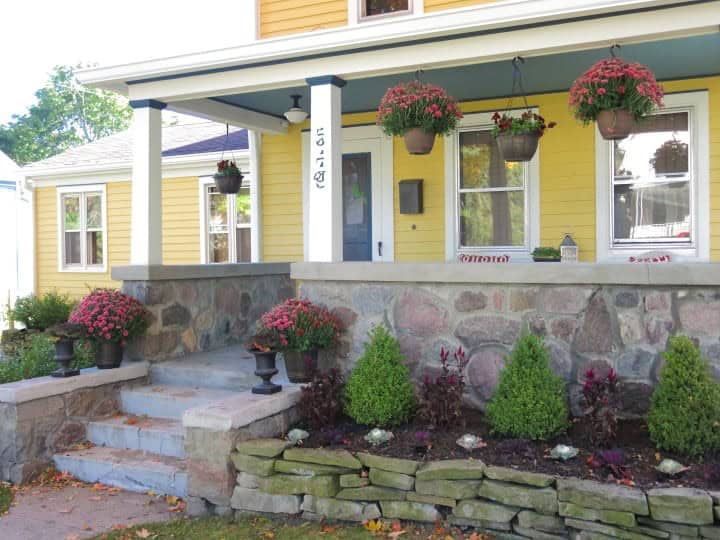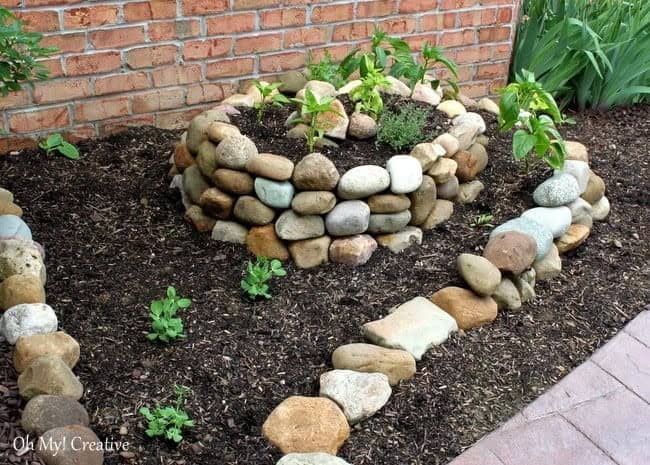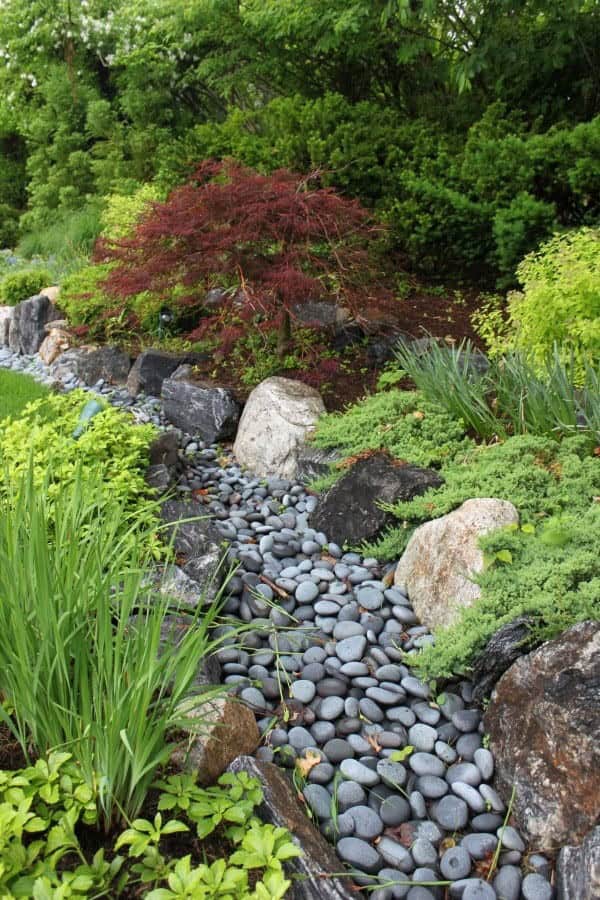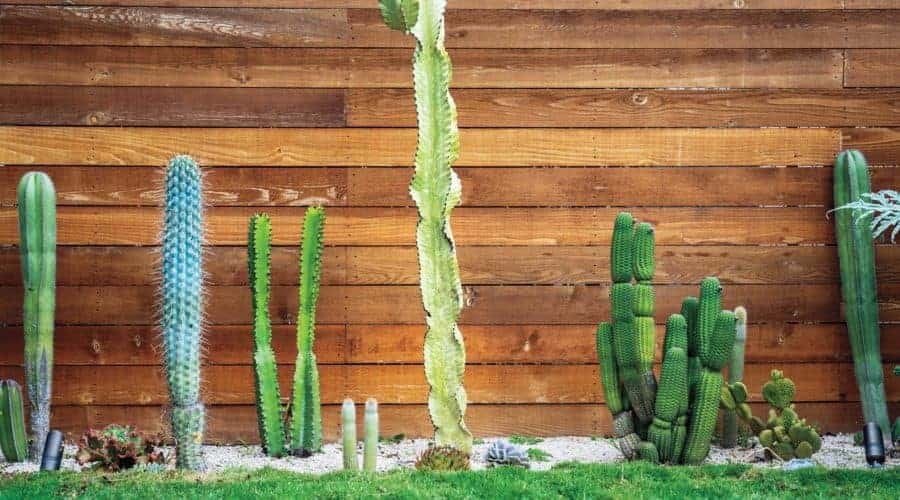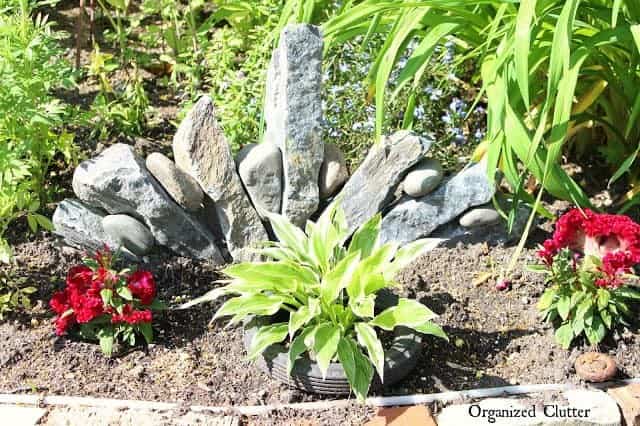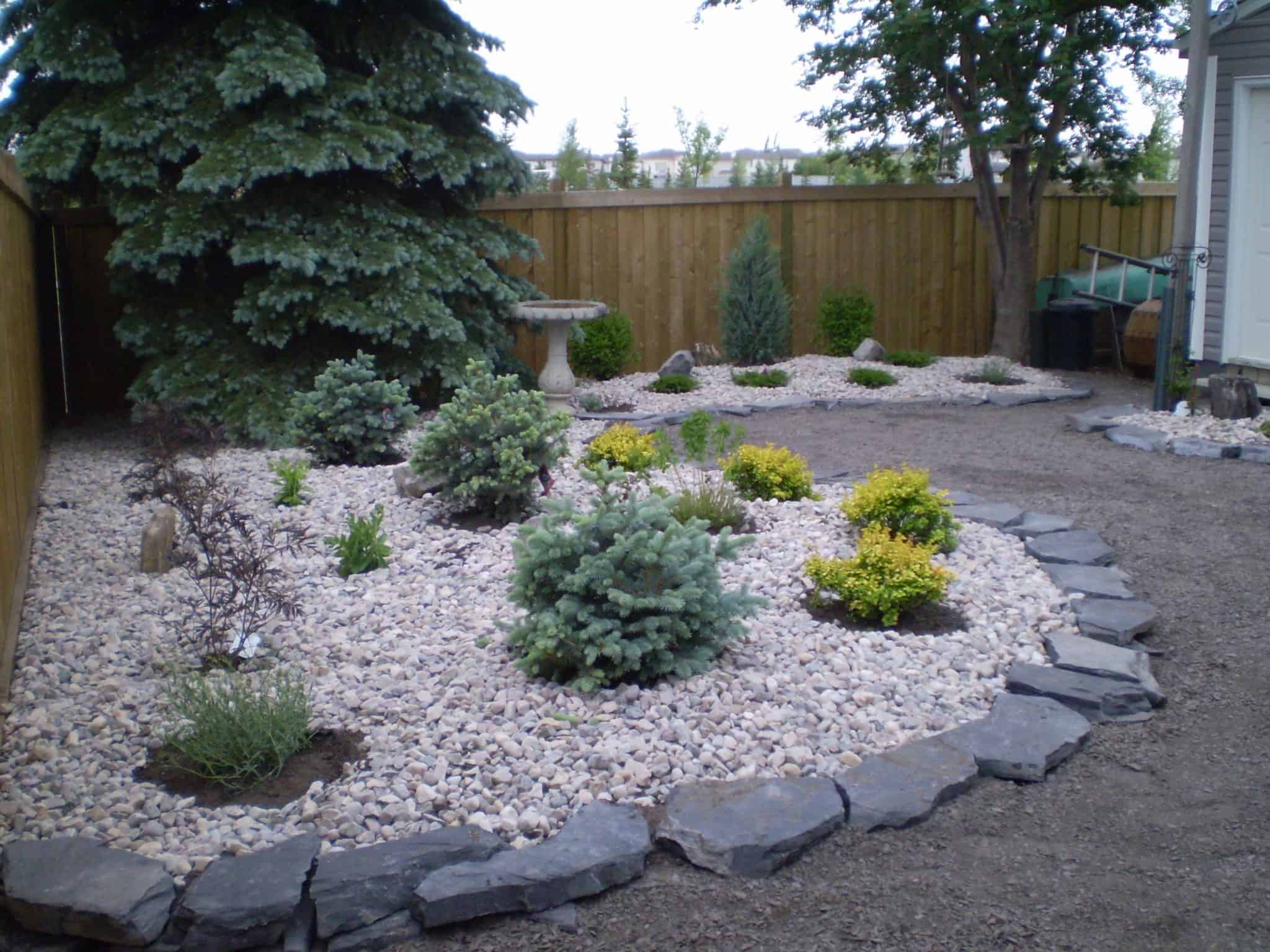While rocks undoubtedly bring a charming aesthetic to a garden, they also offer several hidden benefits that can enhance its overall health and functionality. By incorporating rocks into your landscape design, you’ll not only combat soil erosion – a problem mulch alone may struggle to address – but also slow down rainwater runoff, dispersing it evenly and promoting healthy drainage.
This is particularly advantageous for plants that prefer well-drained conditions or are susceptible to overwatering. As you plan your rock garden, be strategic about the types of plants you choose and where you place the rocks. Ultimately, the key to success lies in careful consideration and a willingness to have fun with the design process.
Large Rock Wall Garden
The picturesque garden is truly a sight to behold! But let’s dive deeper into the strategic benefits of incorporating large rocks on the hill. Not only do they slow down water runoff and prevent soil erosion, but they also radiate heat onto the ground. This can be particularly beneficial when placed near sun-loving perennials, providing them with an extra boost of warmth. By incorporating these natural elements, you can create a thriving and resilient rock garden.
Succulent Rock Garden
Integrating small, vibrant pebbles into a thriving succulent garden not only adds visual appeal but also fosters a harmonious environment for these unique plants. By combining pebbles with sand and moss, you can craft a visually stunning display that showcases the beauty of your succulents. This dynamic arrangement not only catches the eye but also serves as a natural filter, regulating the amount of water that reaches the roots of your succulents, thereby preventing over-watering.
As succulents are notoriously particular about their moisture levels, this thoughtful addition can make all the difference in promoting healthy growth and development.
Rocks on a Hill
By incorporating rocks into your hillside landscape, you can not only slow down rainwater runoff but also retain topsoil. The benefits extend far beyond aesthetics, as a thoughtful arrangement of rocks, mulch, and native plant species can create a haven for local wildlife. Consider adding tall shrubs, vibrant flowers, and fragrant grasses to craft the ultimate butterfly habitat.
Rock Border in Front Garden
The clean lines created by the thin rocks bordering the front garden provide a polished finish to your outdoor space. These decorative barriers also serve as a natural separator, keeping elements in harmony. For added visual interest, consider juxtaposing the color of your mulch with that of the rocks. In this example, the dark mulch creates a striking contrast against the light gray-green rocks, further enhanced by the addition of plants featuring complementary hues.
By adopting this harmonious approach, you can craft a visually appealing rock garden.
Spiral Rock Garden
Nature’s intricate patterns are characterized by spirals, which can be found in various forms such as snail shells, plant tendrils, tornados, whirlpools, and even human fingerprints. Spirals often embody growth and motion, yet they can also serve as a practical solution for optimizing space. This concept can be applied to gardening, where the spiral technique offers a unique approach to creating visually appealing and functionally efficient spaces.
By incorporating a spiral design in your garden, you can create a sense of depth while providing varying levels of sunlight exposure. Plants at the base of the spiral will enjoy shade, whereas those at the top will bask in direct sunlight. This harmonious balance encourages healthy plant growth and adds an artistic touch to your outdoor space.
Dry Stream Rock Garden
A dry stream crafted from river stones can serve as both a charming border for your garden’s edge and a functional solution for managing rainwater runoff. The natural beauty of the stone arrangement is further enhanced when it’s utilized to redirect excess water towards areas that require more moisture, effectively supplementing your garden’s hydration needs.
Cactus Rock Garden
When cultivating plants that thrive in dry conditions, such as succulents and cacti, a rock-based mulching system can be a game-changer. The key is to abandon traditional bark mulch that excels at retaining moisture, instead opting for small pebbles or gravel that allow water to dissipate more effectively. By doing so, you’ll create an ideal environment for these drought-loving plants to flourish.
Decorative Rock Garden
While rocks are often thought of as playing a functional role in slowing down water flow or preventing soil erosion, they can also be used for purely aesthetic purposes. One way to do this is by creating visually striking rock formations in areas where you want to add some ground coverage. The natural beauty of the rocks themselves can be highlighted through minimal intervention, or you can get creative and paint them vibrant colors to create a truly unique and eye-catching feature.
Low Maintenance Rock Garden
Transform your outdoor space into a stunning haven without sacrificing precious time for upkeep! For those seeking a low-fuss yet visually appealing solution, consider creating a rock garden. This versatile design not only eliminates tedious weeding and excessive watering but also fosters a natural balance by allowing rocks to suppress weeds and regulate water dispersal.
By embracing the beauty of simplicity, you can enjoy your outdoor oasis without breaking a sweat – or dedicating hours each week to maintenance.
Creepers and Rock Gardens
When it comes to pairing elements in your garden, combining creeping plants with rocks is an attractive combination that offers both functionality and aesthetic appeal. The plants have something to grasp onto, while the rocks take on a beautiful, lush appearance with their light green and blue hues. This low-maintenance approach to landscaping makes for a stunning display in a side garden, along the edge of your deck or anywhere else on your property where a touch of elegance is desired.
Whether you’re looking to fill gaps between plants or create an entire rock garden as a focal point, this pairing offers endless possibilities. Beyond its visual appeal, using rocks in your garden can also provide practical benefits. By incorporating thermal mass into your design, you can accelerate soil warming and extend the growing season by several weeks. Simply place rocks in strategic locations to absorb and retain heat, and enjoy the rewards of a head start on the gardening year.
If creativity is your thing, consider using rocks to create unique sculptures or painting them vibrant colors to add an extra layer of visual interest. The possibilities are truly endless when it comes to incorporating rocks into your garden design.
